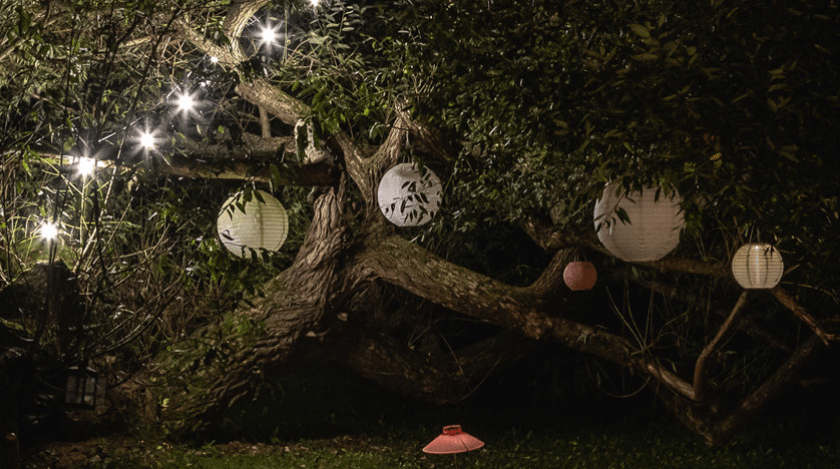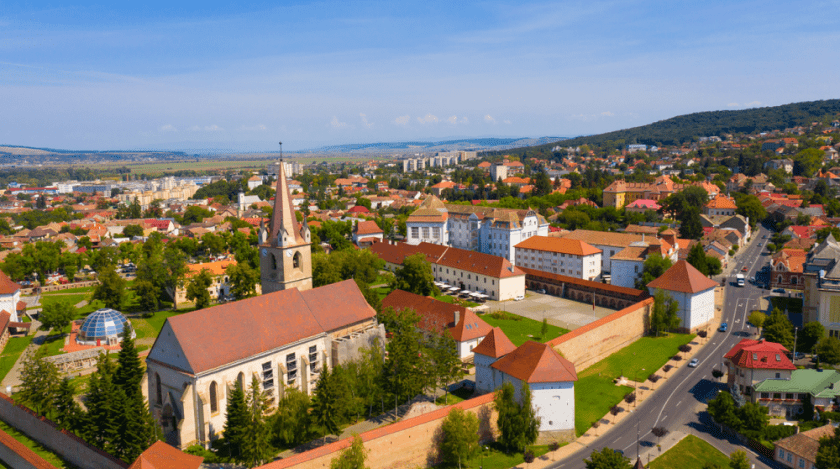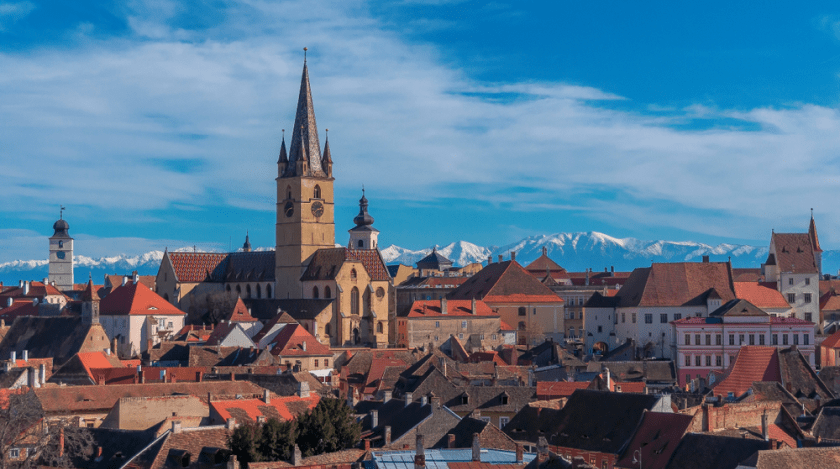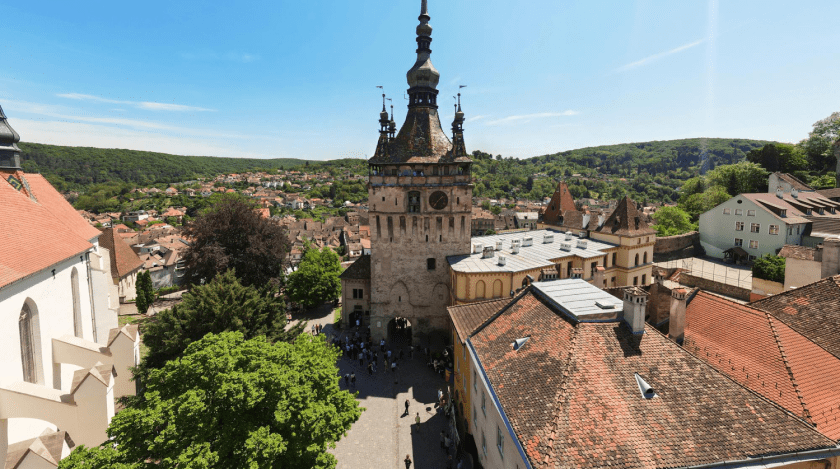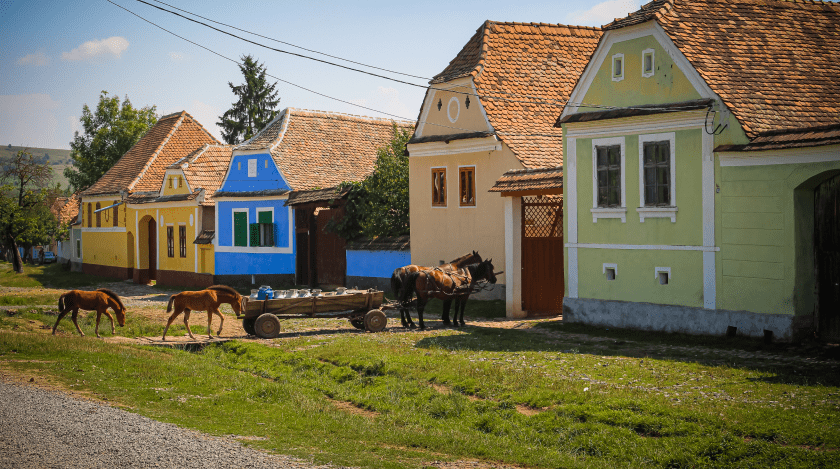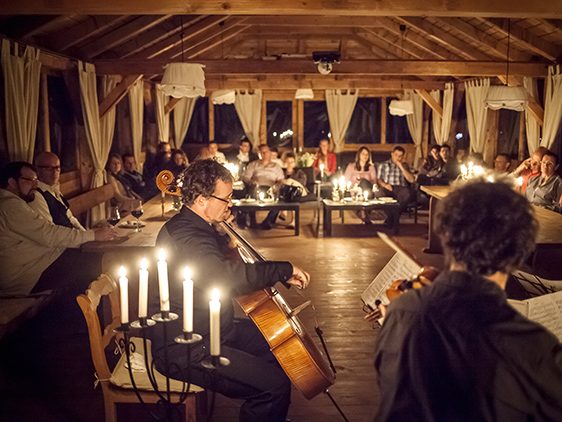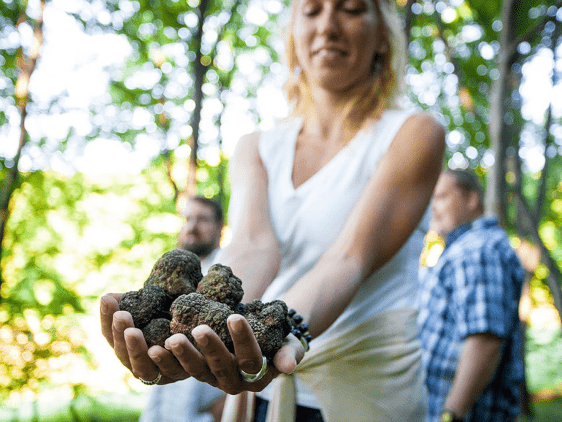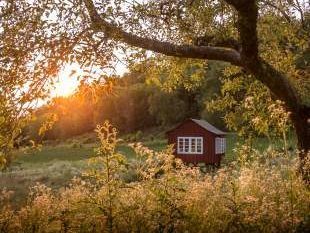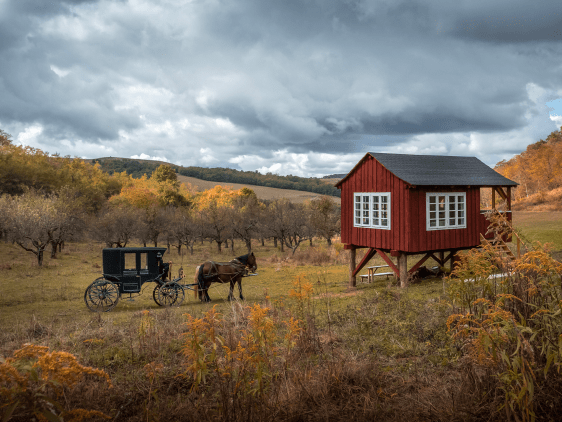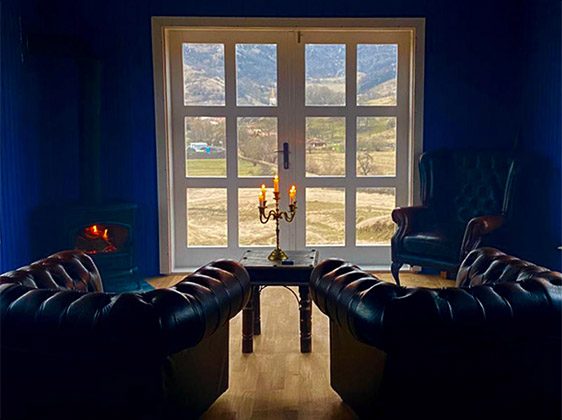So, you’re coming to Romania? Fantastic! You’ve probably seen pictures of Transylvania’s fairytale castles and vibrant cities, but I’m going to let you in on a secret. The real soul of this country, its wild and untamed heart, lies in the magnificent arc of the Carpathian Mountains. Forget what you think you know. This is your guide to trading cobblestones for hiking trails and discovering landscapes that will stay with you forever.
|
A Quick Guide to Romania’s Mountains:
|
This isn’t just a list of places; it’s your roadmap to adventure. We’ll bypass the generic advice and get straight to the good stuff. You’ll find out which peaks are worth the climb, which trails offer the most stunning views, and where to find that perfect, quiet corner of nature. Whether you’re an expert trekker or just want a beautiful walk in the woods, your perfect Romanian mountain experience starts right here.
- Carpathian Mountains: Your Guide To Europe’s Last Great Wilderness
- Where Exactly Are The Carpathian Mountains?
- Piatra Craiului – A Limestone Paradise
- The Bucegi Mountains: Accessible Wonders And Mysterious Rocks
- Făgăraș Mountains – The Roof Of Romania
- Retezat Mountains – Lakes And Wilderness
- Apuseni Mountains: The Land Of Caves And Traditional Villages
- Parâng Mountains – Off The Beaten Path
- Ceahlău Massif – The Sacred Mountain
- Preserving Romania’s Mountain Heritage
- Valea Verde: Your Transylvanian Basecamp For Trails And Truffles
- People Also Ask About The Romanian Mountains: Your Questions, Answered
Carpathian Mountains: Your Guide To Europe’s Last Great Wilderness
The Carpathian Mountains are a 1,500-kilometer-long range forming a vast arc across Central and Eastern Europe. Over half of this range lies within Romania, creating a natural fortress around the Transylvania region. These mountains are not just a geographical feature; they are a vital sanctuary for biodiversity, hosting the continent’s largest populations of brown bears, wolves, and lynx in some of Europe’s last remaining virgin forests.
- Europe’s wildlife stronghold: The Romanian Carpathians are home to brown bears, wolves, and lynx.
- Vast virgin forests: The Southern Carpathians contain Europe’s largest unfragmented forested area, offering a glimpse into the continent’s primeval past.
- Diverse adventures await: The landscape provides a perfect setting for everything from gentle nature walks and wildlife watching to challenging, multi-day high-altitude treks.
Unlike the Alps, the Carpathians’ notoriety lies not in their peak altitude but in their unparalleled wildness. Their extensive, unfragmented ecosystems function as a crucial “bridge” for wildlife dispersal across Europe and preserve traditional landscapes that have vanished elsewhere.
Where Exactly Are the Carpathian Mountains?
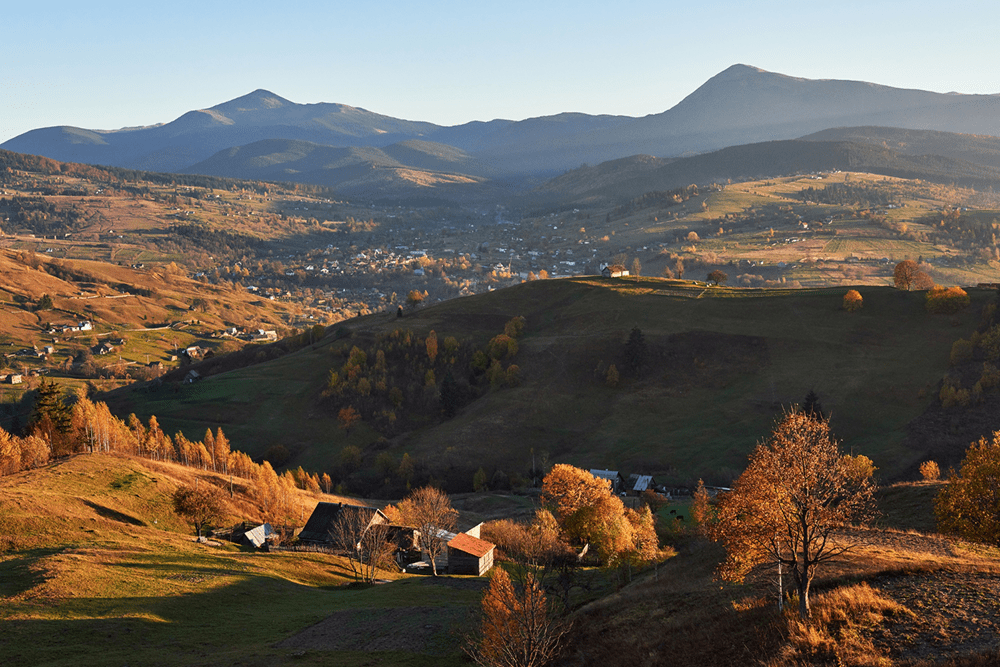
The Carpathians form a 1,500 km (930 mi) arc across eight Central and European countries, starting from Austria and the Czech Republic and ending in Romania and Serbia. The largest portion (over 50%) is in Romania, where the Eastern and Southern Carpathians encircle the Transylvanian Plateau like a protective shield.
The mountain range is not a single, unbroken chain but a series of distinct groups. They are broadly divided into the Western Carpathians (in Austria, Czech Republic, Poland, Slovakia), the Eastern Carpathians (in Poland, Slovakia, Ukraine, Romania), and the Southern Carpathians (in Romania and Serbia).
In Romania, these divisions are even more nuanced, including the Western Romanian Carpathians, the curving Eastern Carpathians, and the high peaks of the Southern Carpathians, also known as the Transylvanian Alps. This geographic placement has created a natural fortress that has historically sheltered unique cultures and traditions within Transylvania.
Imagine you are driving north from Bucharest towards Brașov. The dramatic, forested slopes that rise up to greet you are the Bucegi Mountains, a massif that forms part of the Southern Carpathians. You are literally entering the great arc that defines the heart of the country.
What to Take into Consideration
- Accessibility: Major gateways like Brașov, Sibiu, and Cluj-Napoca offer excellent access to various parts of the range, from the well-trodden paths of Piatra Craiului to the remote wilderness of the Apuseni.
- Ranges: The Făgăraș Mountains in the south offer rugged, high-altitude alpine terrain. In contrast, the Apuseni Mountains in the west are characterized by rolling hills, deep gorges, and extensive cave systems.
- Infrastructure: While some areas have a well-developed network of mountain huts (cabane) and marked trails, others remain truly wild and require self-sufficiency.
What Makes The Biodiversity Of The Carpathians So Unique?
Their uniqueness stems from hosting Europe’s largest populations of large carnivores within vast, unfragmented, and pristine forests. This habitat, a rarity on the continent, allows species like brown bears, wolves, and lynx to thrive in natural densities.
The Romanian Carpathians are a sanctuary for wildlife that has been largely eradicated from other parts of Europe. The region’s mosaic of old-growth forests, high-altitude meadows, and traditional, low-impact agricultural landscapes provides the perfect environment for a complete food web.
This is one of the last places on the continent where you can find all three of Europe’s large carnivore species coexisting. Organizations like Foundation Conservation Carpathia and WWF are actively working to protect these ecosystems, restore degraded areas by planting millions of saplings, and ensure these wildlife corridors remain intact for future generations.
Europe’s Large Carnivore Hotspot
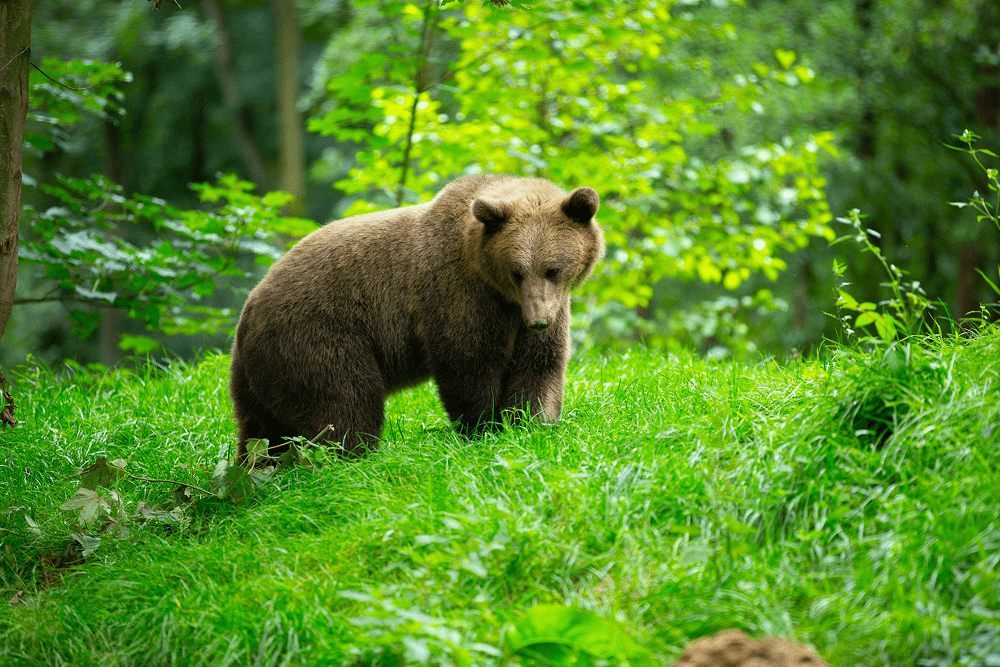
Check the table below to better understand the fauna of this place:
|
Species |
Estimated Population in the Carpathians |
Importance |
|
Brown Bear |
~6,000 individuals |
The largest population outside of Russia, making it a global stronghold. |
|
Grey Wolf |
~2,500 – 3,000 |
A healthy, viable population crucial for maintaining ecosystem balance. |
|
Eurasian Lynx |
~1,200 – 1,500 |
One of the most significant populations of this elusive and protected predator. |
ValeaVerde.com Tip: For a safe and rewarding wildlife experience, join a guided tour. Local experts know the animals’ habits and will take you to specially designed hides, ensuring you can observe them without disturbance and from a safe vantage point.
How To Plan Your Carpathian Adventure
Beginner Friendly
- Take a scenic cable car ride: From Sinaia or Bușteni, take a cable car up to the Bucegi Plateau. You can enjoy spectacular alpine views and take a gentle walk to landmarks like Babele or the Heroes’ Cross on Caraiman Peak with minimal effort.
- Hike the Zărnești Gorges: Near the town of Zărnești, the Piatra Craiului National Park offers an easy, flat walk through the impressive Zărnești Gorges, carved deep into limestone cliffs. It’s a dramatic landscape accessible to any fitness level.
- Visit the Liberty Bear Sanctuary: Located near Zărnești, this sanctuary provides a home for rescued brown bears. A guided tour offers a chance to see these magnificent animals up close in a safe, ethical environment while supporting their conservation.
For veterans
- Trek the Făgăraș Ridge: Known as one of Europe’s most challenging and spectacular high-altitude treks, this multi-day journey takes you across the spine of the Transylvanian Alps, summiting Romania’s highest peaks, Moldoveanu (2,544m) and Negoiu (2,535m).
- Explore Retezat National Park: A paradise for seasoned hikers, this park is famous for its rugged peaks and over 80 glacial lakes. Wild camping is permitted in designated areas, offering a true wilderness immersion.
Quick Checklist for a 24 hour Trip
- Sturdy, comfortable hiking boots;
- Layered clothing and a waterproof jacket (mountain weather is unpredictable);
- At least 1.5 liters of water and energy-rich snacks;
- A downloaded map or a GPS device;
- Sunscreen and sunglasses;
- [Contact information for local mountain rescue.
After successfully completing a few day hikes, you could consider a “village-to-village” self-guided tour. These trips allow you to experience the mountains’ natural beauty while enjoying the comfort of local guesthouses and the unique culture of Romania’s mountain villages.
Piatra Craiului – A Limestone Paradise
Piatra Craiului National Park presents you with Romania’s longest and highest limestone ridge, a dramatic wall of white rock that extends over 15 miles and soars to heights of 6,560 feet. When the morning sun strikes these limestone cliffs, they glow like molten gold against the deep blue sky, creating a spectacle that will leave you breathless.
Your hiking in Romania experience in Piatra Craiului will challenge and reward you. The famous north-south ridge trail typically requires two days to complete, taking you along knife-edge ridges where the limestone has been carved by millennia of wind and weather into fantastic shapes. Below you, glacial lakes shimmer like scattered jewels, their surfaces mirroring the towering peaks.
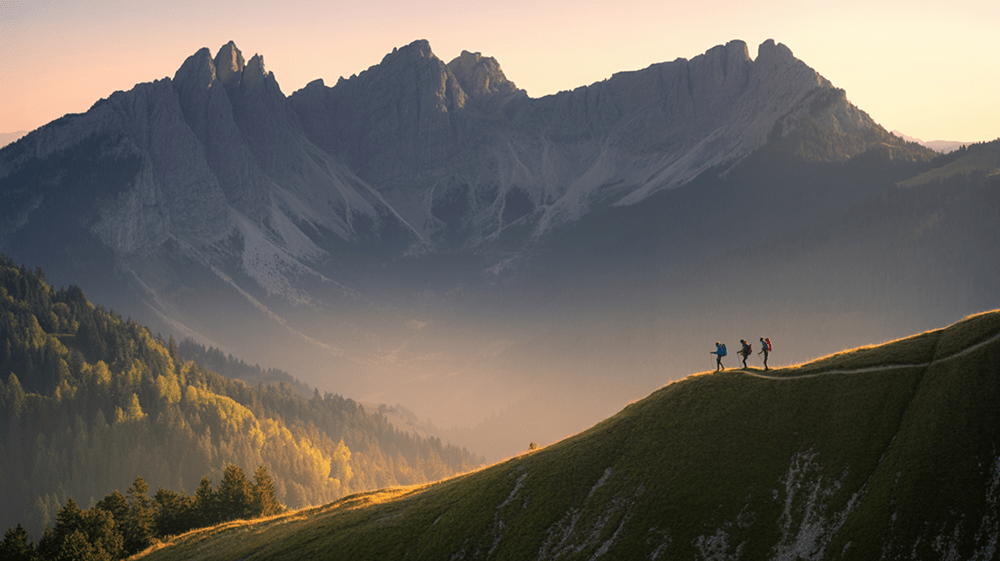
The park’s landscape tells a story written in stone and water. Deep gorges slice through the limestone, their walls polished smooth by flowing water. Hidden within these cliffs are mysterious caves where your flashlight beam reveals chambers decorated with delicate stalactites and stalagmites, each one a masterpiece sculpted by patient drops of mineral-rich water.
After experiencing the rugged beauty of Piatra Craiului, prepare to be enchanted by the accessible wonders and mysterious rocks of the Bucegi Mountains.
Piatra Craiului – Key details for hikers
- Best For: Thrill-seekers, experienced scramblers, rock climbing, and unique ridge walks.
- Highest Peak: La Om (or Piscul Baciului) (2,238 m / 7,343 ft).
- Key Attractions: The main limestone ridge itself, Zărnești Gorges (Cheile Zărneștilor), traditional villages of Măgura and Peștera.
- Accessibility & Base Towns: The main gateway is the town of Zărnești. Plaiul Foii is a popular starting point for many trails.
- Difficulty Level: Difficult to Extreme. The main ridge trail is technical and exposed. Lower-level routes are moderate.
The Bucegi Mountains: Accessible Wonders and Mysterious Rocks
The Bucegi Mountains, jewels of the Romanian Alps, offer some of the most accessible yet spectacular mountain experiences in the entire Carpathian range. From the elegant resort towns of Sinaia and Bușteni, nestled in the Prahova Valley, you can ascend by cable car into an alpine wonderland.
The Sphinx And Babele: Nature’s Sculptures
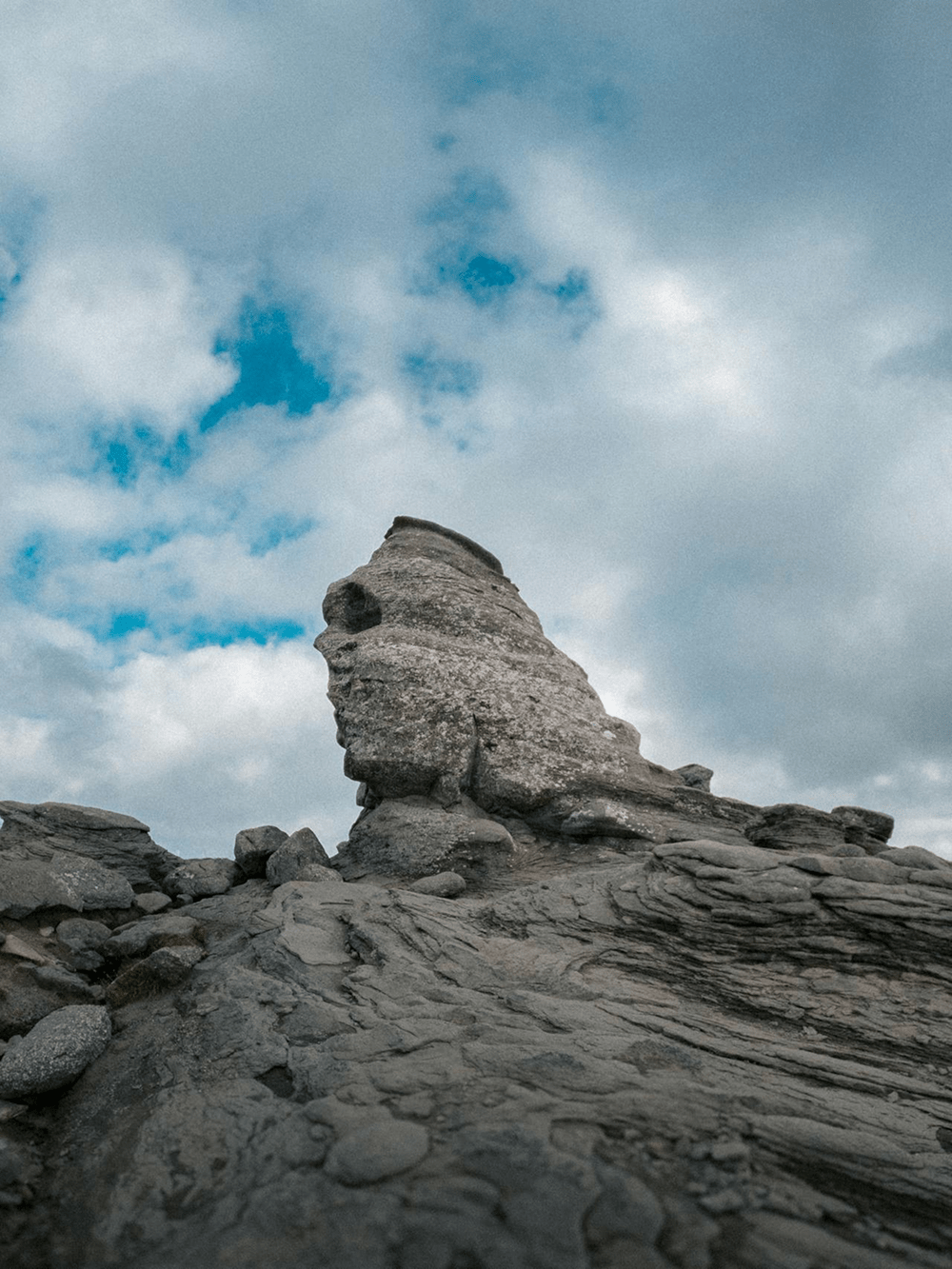
At over 2,000 meters above sea level, you’ll encounter the Sphinx and Babele—wind-eroded rock formations that have sparked legends. The Sphinx, with its eerily human-like profile, gazes eternally across the Carpathian ridges, while the Babele (Old Women) stand like ancient sentinels, their weathered forms testament to the power of wind and time. You can reach these natural sculptures by cable car from Bușteni or Sinaia, or challenge yourself with the hike on foot, breathing in the crisp mountain air.
Gateway from the Prahova Valley
The Prahova Valley serves as your gateway to these mountain wonders, with Peleș Castle standing guard at the base of the mountains. This architectural masterpiece, with its ornate spires, provides the perfect contrast to the beauty that awaits you in the peaks above. The easy access from these resort towns means you can enjoy breakfast in an elegant hotel and be walking among alpine meadows within hours.
The Bucegi Mountains – Key details for hikers
- Best For: All skill levels, accessible high-altitude plateaus, unique rock formations, and day trips.
- Highest Peak: Omu Peak (2,505 m / 8,219 ft).
- Key Attractions: The Sphinx and Babele rock formations, Heroes’ Cross on Caraiman Peak, Peleș Castle (at its base).
- Accessibility & Base Towns: Excellent access via cable cars from Bușteni and Sinaia in the Prahova Valley. These towns are major hubs.
- Difficulty Level: Mixed. Easy walks on the plateau; moderate to difficult trails leading up from the valley or to Omu Peak.
Having explored the accessible beauty of the Bucegi Mountains, prepare to ascend to the “Roof of Romania”: the Făgăraș Mountains.
Făgăraș Mountains – The Roof of Romania
When mountaineers speak of the Făgăraș Mountains with reverence, they’re referring to the “Transylvanian Alps”—Romania’s most challenging high-altitude playground.
For many, the ultimate goal of visiting this range is to stand on one of those very summits. Knowing which peaks are the highest and what it takes to conquer them is the first step in planning a truly epic adventure. Discover the definitive list of the top 5 highest peaks in Romania and start charting your course to the roof of the country.
Home To The Highest Peaks
Here you’ll find Moldoveanu Peak, standing proud at 2,544 meters (8,346 feet), and Negoiu Peak at 2,535 meters (8,316 feet)—the twin giants that earn the Făgăraș range its title as the roof of Romania. The trails leading to these summits will test you, demanding technical skill, physical endurance, and mental determination. When you finally stand on these lofty summits, with all of Romania spread out below you, you’ll understand why mountaineers consider these peaks among Europe’s most rewarding challenges.
The ambition to stand on Moldoveanu Peak, the very highest point in the country, is a powerful one. A successful ascent requires more than just willpower; it demands a solid plan, from choosing the right route to knowing what to pack. Get the complete guide to climbing Moldoveanu Peak and turn that dream of reaching the summit into a well-prepared reality.
The Transfăgărășan: More Than Just A Road
The Transfăgărășan road, typically open from July 1 to October 31 (though you should always verify current conditions), offers a journey through the heart of these mountains. As you wind your way up this engineering marvel, each turn reveals new wonders: the waters of Bâlea Lake reflecting the surrounding peaks, the cascade of Capra Waterfall sending mist dancing in the sunlight, and the Vidraru Dam holding back an emerald reservoir.
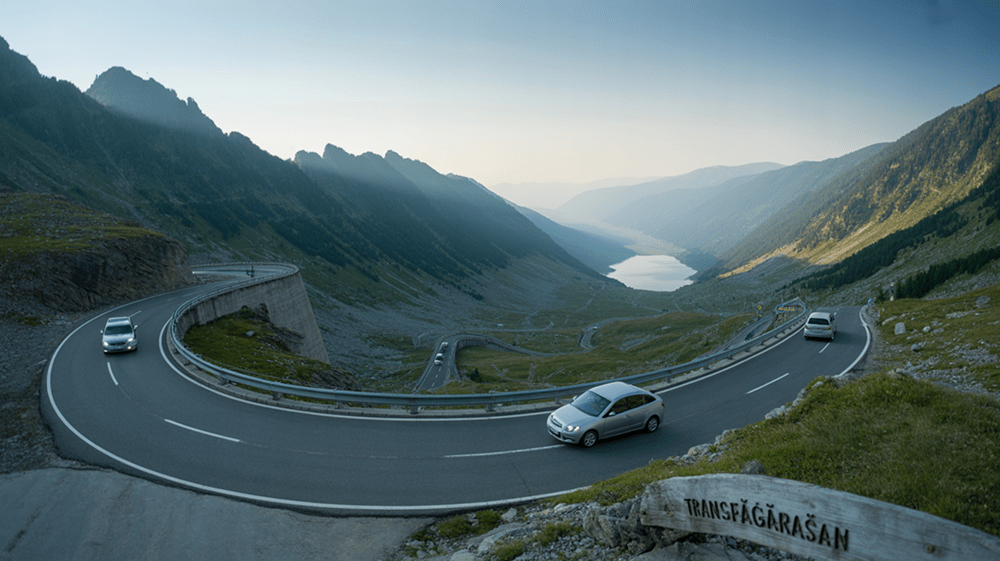
That image of Bâlea Lake, a perfect mirror for the sky and stone, is often what captures the imagination most. This glacial wonder is more than just a photo stop; it’s the true heart of the Transfăgărășan journey, with its own stories to tell. Read everything you need to know about Lake Balea, the glacial wonder of the Transfagarasan, and plan your visit to this breathtaking destination.
Făgăraș Mountains – Key details for hikers
- Best For: Experienced hikers, challenging multi-day treks, and high-altitude scenery.
- Highest Peak: Moldoveanu Peak (2,544 m / 8,346 ft) – the highest in Romania.
- Key Attractions: Transfăgărășan Highway, Bâlea Lake, Capra Lake, Negoiu Peak.
- Accessibility & Base Towns: Access is via the Transfăgărășan (summer only). Main towns are Victoria, Avrig, and Cârțișoara on the north side; Arefu on the south.
- Difficulty Level: Difficult. The main ridge is one of Europe’s most challenging long-distance trails.
Leaving behind the challenging peaks of the Făgăraș, we now venture into the serene landscapes of the Retezat Mountains, a realm of lakes and untouched wilderness.
Retezat Mountains – Lakes and Wilderness
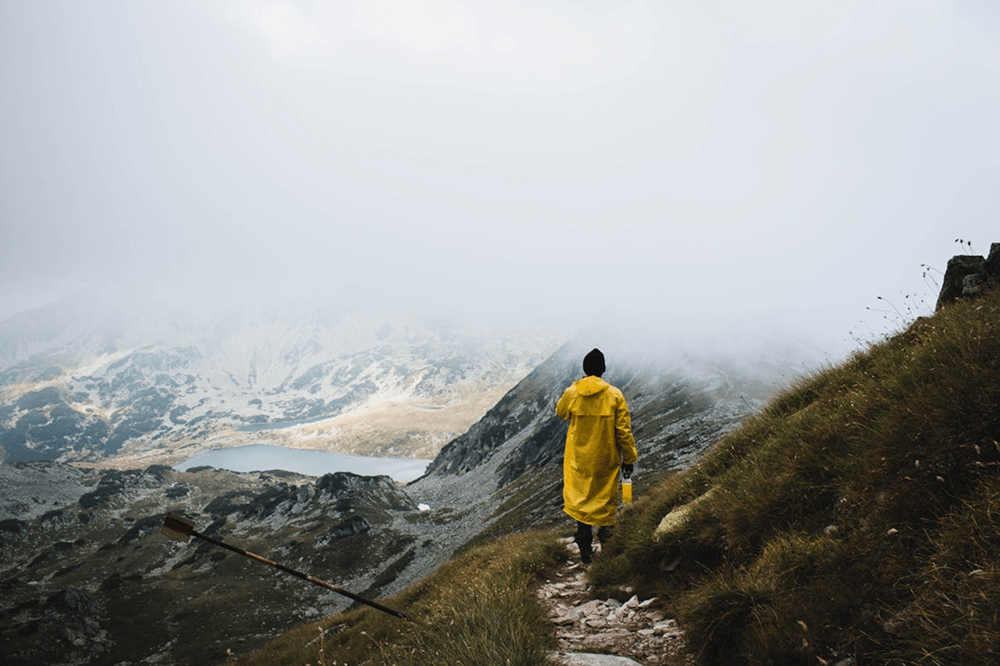
In the Retezat Mountains, you’ll discover Romania’s oldest national park, established in 1935 as a sanctuary for some of the country’s most pristine wilderness. This is where hiking becomes a journey through landscapes so untouched they seem to exist outside of time, where peaks soaring above 8,028 feet, including the majestic Peleaga Peak, create a dramatic skyline.
The true magic of Retezat lies in its collection of over 80 glacial lakes, each one a perfect mirror reflecting the surrounding peaks and sky. Bucura, the largest at 22 acres, spreads like a sapphire jewel among the granite peaks, while Zanoaga, the deepest at 92 feet, holds mysteries in its dark blue depths. As you hike from lake to lake, the crunch of granite beneath your boots and the whisper of wind through the sparse alpine vegetation create a symphony of wilderness sounds.
The biodiversity here will astound you—over one-third of Romania’s flora can be found within these mountain boundaries. Wildlife enthusiasts will thrill at the possibility of encountering chamois leaping across cliff faces, red and roe deer grazing in mountain meadows, or catching a glimpse of lynx tracks in the soft earth beside a mountain stream. The presence of bears, wolves, and foxes reminds you that this is still a wild country where nature’s ancient rhythms continue undisturbed.
Retezat Mountains – Key details for hikers
- Best For: Wilderness lovers, pristine nature, and exploring glacial lakes.
- Highest Peak: Peleaga Peak (2,509 m / 8,232 ft).
- Key Attractions: Bucura Lake (largest glacial lake in Romania), over 80 other glacial lakes (“the blue eyes”), Retezat National Park’s biodiversity.
- Accessibility & Base Towns: Access is more remote. Main entry points are Cârnic and Poiana Pelegii. Towns like Horezu or Petroșani are further away but serve the region.
- Difficulty Level: Moderate to Difficult. Trails are well-marked but often long, with significant elevation gain.
From the pristine wilderness of Retezat, we now journey to the Apuseni Mountains, a land of hidden caves and traditional villages that offer a different kind of mountain experience.
Apuseni Mountains: The Land of Caves and Traditional Villages
The Apuseni Mountains offer a gentler but no less fascinating mountain experience, where rolling hills and ancient plateaus hide some of Romania’s most spectacular underground wonders. This is a landscape shaped as much by water as by time, where streams have carved intricate cave systems through the limestone bedrock, creating a hidden world of chambers and passages that sparkle with mineral formations.
Underground Marvels: Scărișoara Ice Cave And Bears’ Cave
Descending into Scărișoara Ice Cave feels like entering a frozen cathedral, where massive ice formations have remained unchanged for thousands of years. The air here is so cold it takes your breath away, and your footsteps echo in chambers where ice sculptures created by nature rival anything human artists could imagine. The nearby Bears’ Cave tells a different story, its warm chambers decorated with delicate stalactites and stalagmites that have grown over millennia, creating formations that seem to flow like frozen waterfalls.

Gentle Trails And Scattered Villages
The Apuseni Mountains are perfect for those who prefer their mountain adventures at a more relaxed pace. Here you can enjoy gentle hiking trails that wind through traditional villages where time seems to have stood still, where horse-drawn carts still navigate cobblestone streets and local artisans practice crafts passed down through generations. Mountain biking through these rolling hills offers a different perspective, allowing you to cover more ground while still savoring the peaceful atmosphere of villages like Roșia Montană and Rimetea, where colorful houses cluster around ancient churches and the air carries the scent of wood smoke and home-baked bread.
The idea of exploring deep caves and driving through picturesque, remote villages has captured your imagination. You’re looking for an adventure that combines stunning nature with authentic local culture. Explore the Transalpina de Apuseni route and all the activities that await you in this magical corner of Romania.
Apuseni Mountains – Key details for hikers
- Best For: Caving, gentle hiking, mountain biking, and exploring traditional rural culture.
- Highest Peak: Cucurbăta Mare (1,849 m / 6,066 ft).
- Key Attractions: Scărișoara Ice Cave, Bears’ Cave (Peștera Urșilor), traditional “moți” villages, Cetățile Ponorului karst complex.
- Accessibility & Base Towns: Scattered villages like Arieșeni and Gârda de Sus are popular bases. Towns like Alba Iulia or Cluj-Napoca are major cities providing access to the region.
- Difficulty Level: Easy to Moderate. Ideal for family trips and those looking for less strenuous, but beautiful, outdoor experiences.
Having experienced the gentle beauty of the Apuseni Mountains, prepare to venture off the beaten path to the remote and wild Parâng Mountains.
Parâng Mountains – Off The Beaten Path
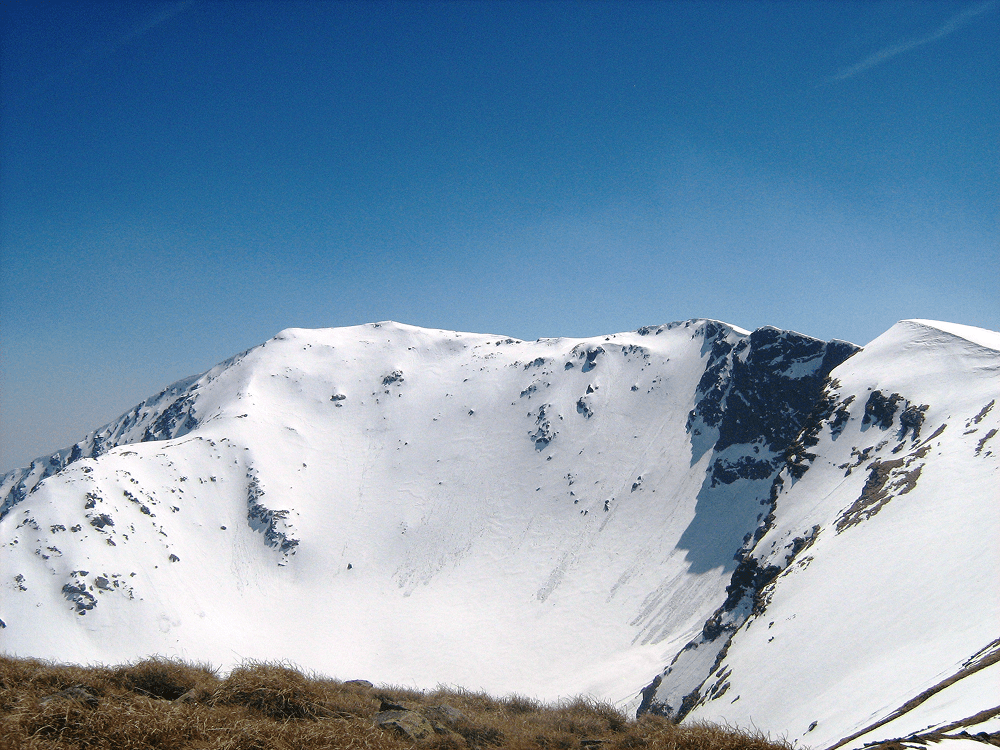
For those seeking solitude and wilderness adventure, the Parâng Mountains offer experiences far from the crowds. These peaks, composed of crystalline and volcanic rocks, rise from some of the most remote landscapes in the entire Carpathian range, where your footsteps might be the first human presence in weeks.
Here, in this land of forests and hidden valleys, you’ll find yourself part of the largest unfragmented forest ecosystem left in Central Europe. The silence is profound—broken only by the distant call of birds, the rustle of leaves, or perhaps the crack of a branch that reminds you that you’re sharing this wilderness with bears, wolves, and other creatures.
Your hiking in Romania experience in the Parâng Mountains connects you not just with nature, but with the remote rural communities that have survived in these mountains for generations. These hardy mountain people have developed a deep understanding of their environment, living in harmony with the natural cycles that govern life in these high places.
Parâng Mountains – Key details for hikers
- Best For: Scenic high-altitude road trips, solitude, and ridge hiking without the crowds of the Făgăraș.
- Highest Peak: Parângu Mare (2,519 m / 8,264 ft) – the fourth highest in Romania.
- Key Attractions: Transalpina Highway (the highest road in Romania), Urdele Pass, glacial lakes like Gâlcescu Lake.
- Accessibility & Base Towns: Access is primarily via the Transalpina road. Main towns are Novaci (south) and Obârșia Lotrului/Rânca ski resort (central).
- Difficulty Level: Moderate to Difficult. The main ridge is a serious undertaking but less technical than the Făgăraș.
From the solitude of the Parâng Mountains, we now ascend to the sacred heights of the Ceahlău Massif, a mountain steeped in history and natural beauty.
Ceahlău Massif – The Sacred Mountain

Known as the Olympus of Romania, Ceahlău Massif rises from a landscape of watercourses and dam lakes like a temple. This massif displays an incredible concentration of life—over 2,000 flower species paint the meadows and slopes, while the diverse wildlife includes over 90 species of birds.
Your journey through Ceahlău will take you past rock formations like Dochia and Cusma Dorobantului, each one steeped in legends that connect these mountains to the ancient Dacians. The thundering Duruitoarea waterfall provides a dramatic soundtrack to your hike, its mist creating rainbows and nourishing the lush vegetation.
The park serves as home to some of Romania’s most impressive wildlife, including the black goat, the elusive lynx, wolves, foxes, brown bears, and pine martens. Each encounter with these creatures reminds you that you’re a guest in their ancient domain.
Ceahlău Massif – Key details for hikers
- Best For: Spiritual history, unique conglomerate rock formations, and panoramic views.
- Highest Peak: Ocolașul Mare (1,907 m / 6,257 ft), but Toaca Peak is more famous and accessible.
- Key Attractions: Toaca Peak, Panaghia rock formation, Dochia Chalet, Duruitoarea Waterfall. It is often called the “Olympus of Moldova.”
- Accessibility & Base Towns: The main base is the Durău resort. Izvorul Muntelui is another key access point.
- Difficulty Level: Moderate. The trails are well-maintained but involve a steady, significant climb to the main plateau.
Having explored the sacred Ceahlău Massif, let’s consider how Romania is committed to preserving its mountain heritage for future generations.
Preserving Romania’s Mountain Heritage
Romania’s commitment to protecting its mountain heritage stretches back nearly a century, with the first environmental protection law passed in 1930 and the first forest reservation established in 1932. This tradition of conservation has created a network of national parks, nature parks, and geo-parks, mostly within the Carpathians, that preserve not only the natural landscape but also the local customs, traditional crafts, historical settlement patterns, and regional architecture.
When you choose Romanian mountain resorts and accommodations that support local communities, you become part of this conservation effort. A network of marked paths and trails, along with traditional lodges and local guesthouses, allows you to explore Romania’s wilderness while ensuring that your visit contributes to the preservation of these landscapes.
For those seeking an epic long-distance adventure, consider exploring Via Transilvanica, Romania’s first epic long-distance hiking trail, which also offers various accommodation options along its route.
Sustainable tourism practices—using local accommodations, staying on marked trails, respecting wildlife, and leaving no trace—help ensure that future generations will be able to experience the same wonder that draws you to these mountains. Your responsible approach to hiking in Romania makes a real difference in protecting these natural treasures.
After a day of exploring, consider the perfect place to unwind and reflect on your mountain adventures: Valea Verde, a haven in the heart of Transylvania.
Valea Verde: Your Transylvanian Basecamp for Trails and Truffles
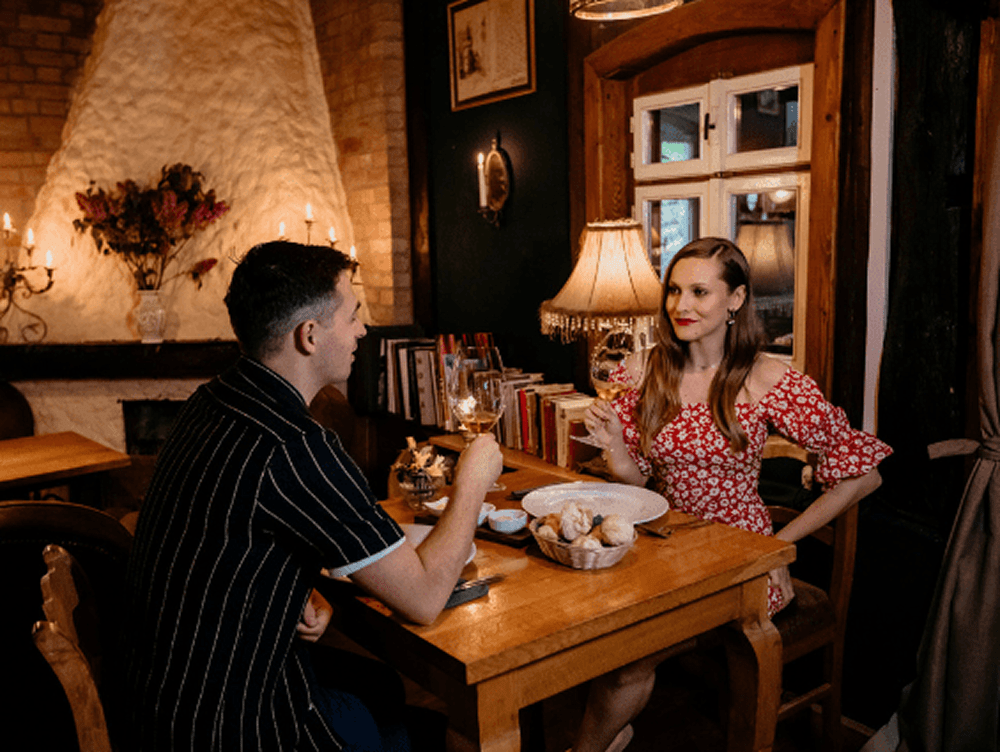
After a long day of exploring Transylvania’s rolling hills and ancient forests, the place you return to matters. Valea Verde is a retreat in the Saxon village of Cund that serves as the perfect basecamp, blending the wildness of your hiking adventure with authentic comfort and award-winning food. It offers a complete Transylvanian experience where you rest, share stories, and refuel.
Valea Verde is more than just a place to sleep. It’s an “albergo diffuso” or “scattered hotel” that integrates you into village life. The focus is on providing a deep connection to the local culture and landscape, from the food on your plate to the trails under your boots.
What Kind Of Accommodation Can I Expect At Valea Verde?
You will stay in beautifully restored Saxon farmhouses that combine traditional character with modern comfort.
Instead of a standard hotel building, Valea Verde offers apartments, suites, and private houses scattered throughout the village of Cund. Each lodging is unique but shares a common aesthetic: rustic-chic decor, handmade wood furniture, and cozy wood-burning stoves.
You can choose from apartments located in the main building next to the restaurant or entire village houses for more privacy, perfect for families or small groups. All are classified with 2 or 3 “daisies,” the official rating for Romanian rural tourism, ensuring a standard of quality and comfort.
Factors to consider
- Location: Some accommodations are next to the main restaurant, while others are a 300-400m walk through the village.
- Amenities: All rooms have en-suite bathrooms, and free WiFi is available. Some larger houses include full kitchens.
- Atmosphere: The experience is designed to be immersive. You are not just a tourist; you are a temporary resident of a historic Transylvanian village.
What is the dining experience like after a long hike?
The Valea Verde Restaurant, housed in a converted barn, is a destination in itself. Chef Jonas Schäfer applies his background in French and Mediterranean cuisine to often-forgotten Transylvanian ingredients. The restaurant is a proud member of the Slow Food association, emphasizing sustainable and local food.
Instead of a large à la carte menu, you’ll be treated to a daily set menu of three, five, or seven courses based on what is freshest. They can also cater to dietary needs like vegetarianism or veganism.
Wine and more: The cellar features an outstanding selection of Romanian wines, with a focus on indigenous grapes like Fetească Neagră. An all-Romanian wine pairing is offered nightly. For a unique experience, you can book a wilderness lunch in a forest clearing or on a ridge with views of the Carpathian foothills.
People Also Ask about the Romanian Mountains: Your Questions, Answered
Do you have more questions about planning your unforgettable trip to the Romanian mountains? We’ve compiled answers to some of the most common inquiries to help you prepare for your adventure.
When Is The Best Month To Hike In Romania?
The ideal time for hiking in Romania at higher altitudes is from June through September, when the snow has melted and the weather is most stable. During these months, you’ll find the alpine meadows in bloom, the mountain huts open, and the trails in their best condition. For exploring lower mountain areas like the Apuseni, you can extend your hiking season from May through October, taking advantage of the milder conditions.
Is Hiking In The Romanian Mountains Safe?
The Carpathian Mountains are home to bears, wolves, and lynx, making wildlife awareness essential for safe hiking. When hiking in Romania, make noise as you walk—clapping, talking, or the occasional “Hey bear!” alerts wildlife to your presence. Never leave food behind, always stay on marked trails, and carry proper gear including navigation tools, first aid supplies, and weather-appropriate clothing. Most encounters with wildlife are brief and harmless if you follow basic safety protocols.
Do I Need A Guide To Hike In The Carpathians?
For well-marked and popular trails in areas like the Bucegi Mountains or Piatra Craiului, experienced hikers can navigate independently using good maps and GPS devices. However, for difficult routes, remote areas, or if you’re unfamiliar with mountain conditions in Romania, a local guide is recommended. Guides not only ensure your safety but also enhance your experience by sharing knowledge about local wildlife, plants, history, and legends.
How Difficult Are The Hiking Trails?
The Romanian Mountains offer a variety in trail difficulty, from easy one-hour walks like the path to Urlătoarea Waterfall to challenging multi-day ridge treks. You’ll find family-friendly trails through the Apuseni Mountains, moderate day hikes in the Bucegi range, and alpine challenges in the Făgăraș Mountains. Most trails are well-marked, and detailed trail maps are available at visitor centers and mountain huts.
As you plan your journey through the Romanian mountains, remember that each range offers a unique experience, from the accessible wonders of the Bucegi to the remote wilderness of the Parâng. Embrace the beauty, respect the environment, and create memories that will last a lifetime. Whether you seek challenging hikes, peaceful retreats, or cultural immersion, the Carpathian wonders await your discovery. So pack your bags, lace up your boots, and prepare to be captivated by the majestic landscapes of Romania.
Photo source: images generated with AI, ValeaVerde.com, Freepik, Pexels, Wikipedia

